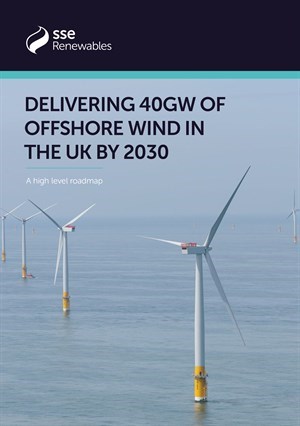
In a year in which record-breaking offshore wind strike prices were secured in the last contracts for difference auction, the UK and Scottish governments both legislated for net zero targets. The UK Government set out an ambition of 40GW of offshore wind by 2030 in their General Election Manifesto, recognising the role offshore wind will play in meeting these net-zero targets
Delivering 40GW of offshore wind will be the backbone of the UK’s net zero energy system, but vital enabling actions are needed if we are to meet this new 2030 target. If we fail to remove the barriers to deployment now, we risk failing to achieve 40GW of offshore wind by 2030 and in turn our over-riding net zero 2050 target.
Contrary to the position of just a few years ago, it is not the cost of offshore wind that is the issue, but rather the significant barriers to deployment, many of which are increasing. These range from consenting challenges, to grid and aviation radar issues, as well as reform of electricity market design.
That is why we’ve published a high-level paper setting  out the nine key issues which we believe governments, regulators and statutory bodies need to work collaboratively with the offshore wind industry to address.
out the nine key issues which we believe governments, regulators and statutory bodies need to work collaboratively with the offshore wind industry to address.
Put simply, if there is no imminent progress on these issues, it will not be possible to achieve 40GW of offshore wind by 2030 or beyond.
This requires a step-change in approach by all involved, but the good news is that the Offshore Wind Sector Deal provides a strong basis for building upon.
The nine-point action plan published by SSE Renewables today sets out an achievable roadmap that will see the UK overcoming current barriers and setting the country on a course to delivering 40GW by 2030.
The recent economic downturn caused by the coronavirus outbreak has resulted in a fall in carbon dioxide emissions, but for all the wrong reasons. This will likely be short-lived as global economies seek to rebuild themselves once we begin exiting this crisis. That’s why it’s important we continue to make the investments we need in new low carbon infrastructure and why we should maintain focus on the UK’s net zero target.
Working together as a set of partners – governments, regulators, statutory bodies and industry – we can chart a course to combat the continuing climate crisis as a win-win way of kickstarting the economy.


